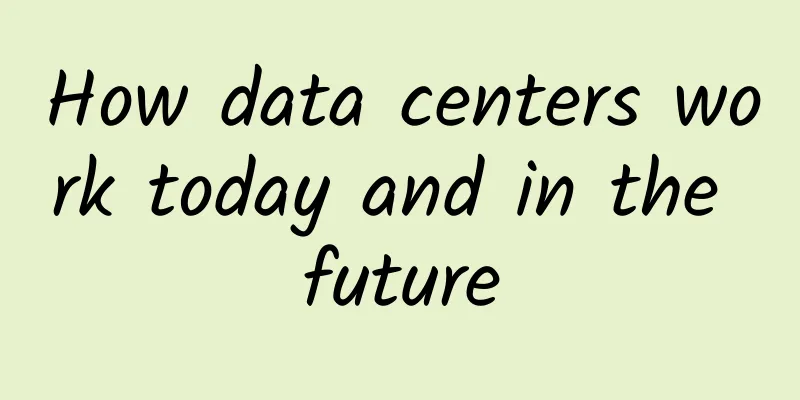Driven by the new infrastructure, will data center construction be "rushed"?

|
The data center construction trend has not yet started, but warnings about duplicate construction can already be seen everywhere. Recently, a media outlet counted the situation of data centers around Beijing, pointing out that as of the end of March, data centers around Beijing had 173,500 cabinets in operation, 325,500 cabinets under construction, and 276,200 cabinets planned, totaling 775,300 cabinets. The conclusion was that "the volume of data centers under construction and planning is astonishing", so it is recommended that "data center construction should avoid a rush". It is undeniable that "herding in" is a very common phenomenon in China's economic development, and it is indeed something that should be guarded against and taken seriously. However, when it comes to the data center industry, specific analysis of specific cases is required. Whether the volume is amazing or not, the market has the final say Although data centers are key infrastructure of the new infrastructure, unlike 5G networks, transportation networks, energy networks, etc., they have very sufficient market competition and a mature commercial system that has been developed for many years. According to the 2019-2020 China IDC Industry Development Research Report, the scale of China's IDC business market reached 156.25 billion yuan in 2019, a year-on-year increase of 27.2%. According to the report, the IDC business will continue to grow at a similar rate during the period of 2020-2022. However, data shows that the growth rate in 2019 and 2020 itself is declining. The report believes that the governments of Beijing, Shanghai, Shenzhen and other regions have successively issued relevant data center energy consumption index control policies, which restrict the scale of new data center commissioning during the cycle. In addition, the demand of emerging industry customers has not yet formed a scale, and the demand of existing industry customers is difficult to expand the growth rate of China's IDC business market scale. The overall market is gradually maturing. In other words, the "astonishing size" that the media is worried about is actually the result of the compression of actual demand. Why is it “Ring of Beijing”? In fact, it is not just Beijing, Shanghai and Shenzhen have also seen the "ring core city" situation. The report mentioned that the governments of Beijing, Shanghai, Shenzhen and other regions have successively issued relevant data center energy consumption index control policies, which has restricted the scale of data center commissioning. But at the same time, market pressure requires data center companies, especially IDC companies, to have their data center rooms close to the demand side, that is, the user population. Therefore, under the strict control of core cities, "surrounding core cities" has become a matter of course. Even today when "new infrastructure" is given such importance, the data center construction policies in major core cities have not been relaxed, and there is even a trend of expanding to the surrounding areas. For major data center companies, there is no such thing as a big push, and grabbing limited core city resources to ensure development is the top priority. Data centers are not that scary. The major core cities strictly control the construction of data centers, and the media is worried about the overdevelopment of data centers. In fact, there are realistic reasons. Data centers are a high-energy-consuming, low-profit industry. In particular, the data centers of Internet companies consume local energy but serve businesses all over the world, and the final profits are difficult to convert into local taxes. And data centers do consume a staggering amount of energy. According to statistics, from 2011 to 2016, the power consumption of data centers increased rapidly, increasing at a rate of more than 10% per year. In 2017, the total power consumption of domestic data centers reached 1,300 kWh, while the annual power generation of the Three Gorges Dam was 97.605 billion kWh. In 2018, the total power consumption of data centers nationwide was 150 billion kWh, accounting for 2% of the total social power consumption. It is expected that by 2025, the proportion will double to 4.05%. If we look at it from the perspective of a single industry, this is a very terrible energy consumption. However, data centers are not simply a single industry. The energy they consume is ultimately transformed into the foundation of the entire digital economy, supporting a series of important industries such as the Internet, communications, intelligent transportation, and smart cities. Therefore, it is not objective to view the energy consumption of data centers only from the perspective of power consumption. Moreover, while energy consumption is increasing, the energy efficiency of data centers is also rising. On February 28 this year, the top academic journal Science published a paper titled "Global Data Center Energy Use Slows Despite Rapid Demand Growth." The study calculated that between 2010 and 2018, global data center demand grew by 550%, while data center energy use grew by only 6%. It can be seen that the increase in data center energy consumption is accompanied by higher energy efficiency. Worrying about the transformation of existing The reduction of data center energy consumption is essentially the advancement of data center technology. Whether it is the improvement of IT equipment efficiency or the reduction of cooling system energy consumption, all of these are ultimately reflected in PUE. The Ministry of Industry and Information Technology and three other agencies also clearly stated in the "Guiding Opinions on Strengthening the Construction of Green Data Centers" issued in early 2019 that by 2022, the average energy consumption of data centers will basically reach the international advanced level, the electricity utilization efficiency value of newly built large and ultra-large data centers will reach below 1.4, high-energy consumption old equipment will be basically eliminated, water resource utilization efficiency and the proportion of clean energy application will be greatly improved, and waste electrical and electronic products will be effectively recycled. Data centers have a long construction period, so when you see a data center with tens of billions of dollars of investment and tens of thousands of cabinets, you don’t have to worry about a surge in energy demand, because it is likely to be built in several phases over several years. As market demand changes, construction plans will also change accordingly. Newly built data centers often use the most mature energy-saving technologies, with great improvements and progress in PUE control and cooling water consumption. The real difficulty lies in the renovation of old data centers. Data centers are asset-heavy industries, and the characteristics of civil engineering determine the difficulty of data center renovation. These old data centers are also the main component of existing data centers. If they cannot be properly renovated, it will be impossible to reduce the overall energy consumption of data centers. Simply restricting the overall situation will limit the development and progress of new technologies. From the perspective of energy consumption and future development, strengthening incentives and subsidies for the transformation of existing data centers is a direction that is more conducive to the implementation of the new infrastructure strategy. |
<<: HTTP interview, 99% of interviewers like to ask these questions
Recommend
Huawei and iSoftStone jointly launch IoT solutions to lead the digital transformation of the industry
[51CTO.com original article] The implementation o...
Why do we need UDP protocol?
Every programmer should know TCP and UDP protocol...
Building a digital foundation: a vast expedition to reshape future education
In the past two years, with the rise of big model...
How much does data center downtime cost?
Data center downtime is unbearable for any enterp...
What is One Network Management? Finally someone explained it clearly
1. Definition of One Network Management Definitio...
Active-active data centers are key to high-availability application resiliency
Enterprises that rely on high-availability applic...
80VPS: Los Angeles VPS starts at 199 yuan per year, 8C (237 IP) cluster server starts at 800 yuan per month
80VPS is a long-established Chinese hosting compa...
As long as you are willing to find us to develop, you don't have to be exhausted.
[51CTO.com original article] The boss said that d...
Wired vs Wi-Fi: Which is Best?
The term Ethernet refers to a wired connection th...
From TCP to Socket, a thorough understanding of network programming
For students who are engaged in program developme...
JuHost: $2.99/month-1GB/20G SSD/1TB/Hong Kong data center
JuHost is a newly opened Hong Kong VPS hosting pr...
Essential for operation and maintenance: 20 common service ports and their corresponding service information
In the operation and maintenance process, it is c...
Xuzhou is included in the pilot program of digital application upgrade for smart city construction
[[189078]] On August 13, the National Administrat...
In-depth analysis of SDN switch configuration and application issues
SDN (Software Defined Networking) is an emerging ...









